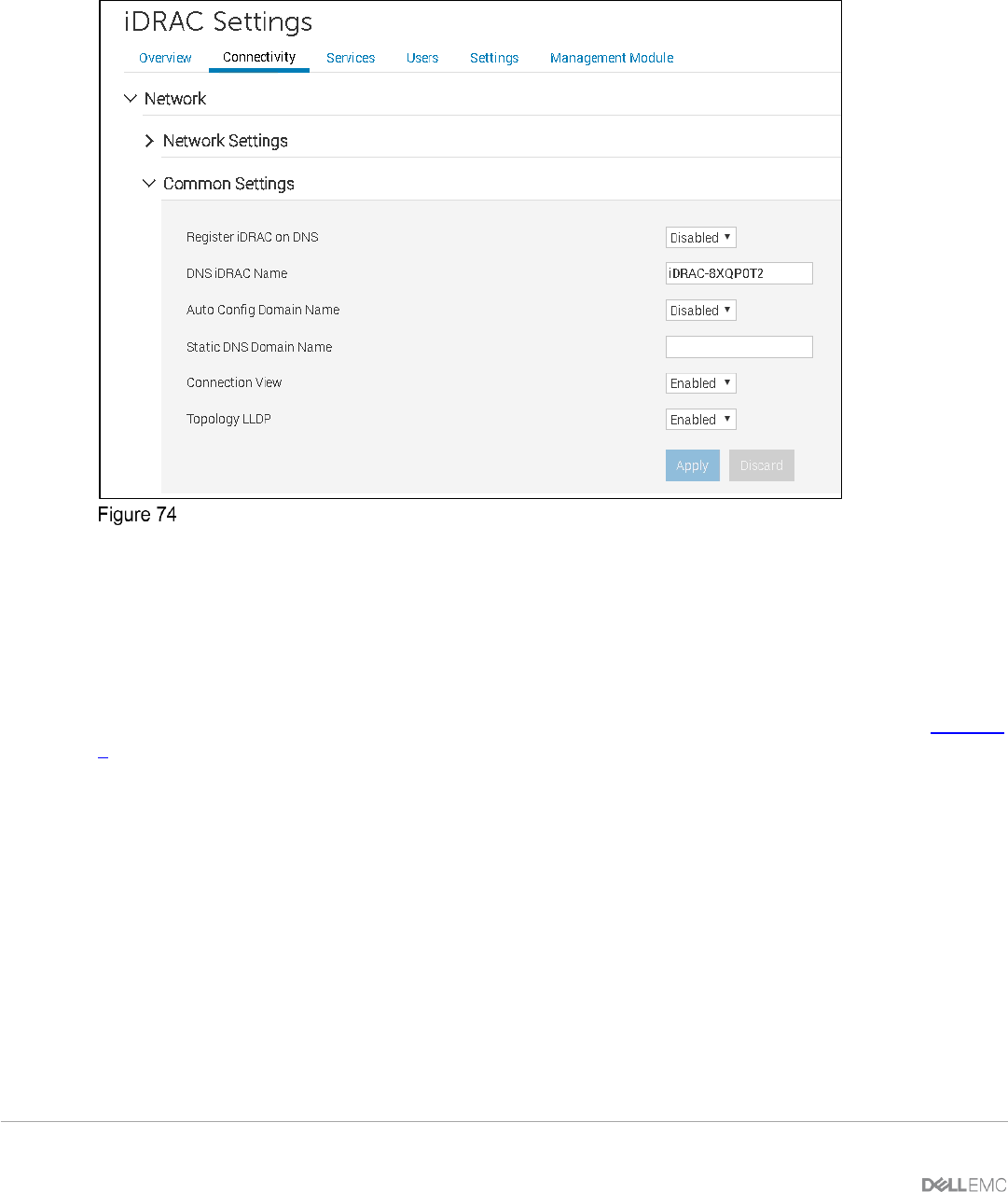Users Guide
Table Of Contents
- 1 Introduction
- 2 SmartFabric Services for PowerEdge MX: An overview
- 3 SmartFabric mode requirements, guidelines, and restrictions
- 3.1 Create multi-chassis management group
- 3.2 Upstream network requirements
- 3.3 VLAN scaling guidelines
- 3.4 Configuring port speed and breakout
- 3.5 Switch slot placement for SmartFabric mode
- 3.6 Switch-to-Switch cabling
- 3.7 NIC teaming guidelines
- 3.8 Maximum Transmission Unit (MTU) behavior
- 3.9 Other restrictions and guidelines
- 4 Creating a SmartFabric
- 4.1 Physically cable MX chassis and upstream switches
- 4.2 Define VLANs
- 4.3 Create the SmartFabric
- 4.4 Configure uplink port speed or breakout, if needed
- 4.5 Create Ethernet uplink
- 4.6 Configure Fibre Channel universal ports
- 4.7 Create Fibre Channel uplinks
- 4.8 Configuring the upstream switch and connect uplink cables
- 5 Deploying a server
- 6 SmartFabric operations
- 7 Switch operations
- 8 Validating the SmartFabric deployment
- 9 SmartFabric troubleshooting
- 9.1 Troubleshooting errors encountered for port group breakout
- 9.2 Troubleshooting Spanning Tree Protocol (STP)
- 9.3 Verify VLT/vPC configuration on upstream switches
- 9.4 Discovery of FEM and compute sleds
- 9.5 Troubleshooting uplink errors
- 9.6 Troubleshooting FC/FCoE
- 9.7 SmartFabric Services – Troubleshooting commands
- 10 Uplink configuration scenarios
- 10.1 Scenario 1 - SmartFabric deployment with Dell EMC PowerSwitch Z9100-ON upstream switches
- 10.2 Scenario 2 - SmartFabric connected to Cisco Nexus 3232C switches
- 10.3 Scenario 3: Connect MX9116n FSE to Fibre Channel storage - NPIV Proxy Gateway mode
- 10.4 Scenario 4: Connect MX9116n FSE to Fibre Channel storage - FC Direct Attach
- 10.5 Scenario 5: Connect MX5108n to Fibre Channel storage - FSB
- 10.6 Scenario 6: Configure Boot from SAN
- A Hardware used in this document
- B Dell EMC Unity information
- C Additional information
- D Validated components
- E Technical resources
- F Support and feedback

79 Dell EMC PowerEdge MX SmartFabric Configuration and Troubleshooting Guide
• Ensure that the drivers and firmware for BIOS, iDRAC, NICs and/or CNAs on the compute sleds are up to
date.
• Verify the Topology LLDP settings. This can be verified by selecting iDRAC Settings > Connectivity on
the compute sled’s iDRAC GUI. Ensure that this setting is set to Enabled as shown in the figure below.
Ensure Topology LLDP is enabled
9.5 Troubleshooting uplink errors
There might be additional settings enabled or disabled after uplinks are added to the fabric.
9.5.1 Toggle auto negotiation
Enabling or disabling auto negotiation from the OME-M console can bring up the uplinks connecting to the
upstream switches. For example, when deploying the SmartFabric with the Cisco Nexus 3232C (see Scenario
2), disable auto negotiation on uplink ports on the MX switches to bring the link up.
The OME-M console is used to disable/enable auto negotiation ports on MX switches. The following steps
illustrate turning disabling auto negotiation on ports 41 and 42 of a MX9116n.
1. From switch management page, choose Hardware > Port Information.
2. Select the ports on which auto negotiation needs to be disabled. In this example, ports 1/1/41 and
port 1/1/42 are selected.
3. Click Toggle AutoNeg > Finish.










